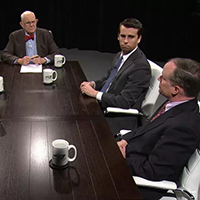Reversal in mortality rate in white, middle-aged adults begs a question
Published November 12, 2015
Editorial by Burlington Times-News, November 11, 2015.Some studies yield such troubling findings that you just hope they’re wrong. But so far, no errors have surfaced in new mortality research on a subset of middle-aged white Americans. In short, too many are dying too young, of causes that raise perplexing cultural questions about substance abuse, pain, mental health and economic opportunity.
The peer-reviewed study, by Anne Case and Nobel Prize-winner Angus Deaton, was reported last week by media outlets including The New York Times and The Washington Post. The researchers examined annual death rates and found that, while they are improving for other demographic groups, they are worsening for white Americans ages 45 to 54 who have a high-school education or less. This is “being driven not by the big killers like heart disease and diabetes, but by an epidemic of suicides and afflictions stemming from substance abuse: alcoholic liver disease and overdoses of heroin and prescription opioids,” the Times said.
Case and Deaton acknowledged the study doesn’t answer the vital “why” question. Researchers speculated on the potential role of economic uncertainty, and took note that the demographic group’s rising death rate seemed to coincide with higher self-reporting of mental distress and chronic pain in the years after 1998. Both pain and opioid use increased “rapidly after the mid-1990s,” yet the “epidemic of pain, suicide and drug overdoses preceded the financial crisis” of 2008, the authors wrote.
It was the only demographic group to experience a “mortality rate reversal,” the study showed. Black Americans — a demographic tragically familiar with early death, and disproportionately affected by complex problems of poverty and discrimination — have a higher death rate, but their longevity trend is improving.
In life, health and mortality, race and ethnicity shouldn’t matter, and they aren’t the point of the Case/Deaton findings. Instead, what makes the study so noteworthy is the unexpected reversal in longevity in one particular group — and the role of suicide and substance abuse in causing this damage.
It’s important to push deeper to trace the causes of disproportionate substance abuse in the cited demographic. Is it related to social isolation? Is there a rural/urban divide? What (such as accident, illness or job injury) triggered pain and disability? The information could be crucial to identifying and providing remedies, whether those involve economic efforts, education, working conditions, treatment, health care or “all of the above.”
Such strategies should become part of the larger national effort to address poverty, mental illness and substance abuse.
To be sure, pain, depression and addiction problems aren’t limited to minimally educated, 45- to 54-year-old whites. Entire age groups ranging from 30 to 64 are experiencing an upswing in deaths from suicide, drugs, alcohol and liver problems, the Case/Deaton study noted, even though overall longevity is rising.
At a time of wondrous advances in life-saving science, it is terribly disheartening to see the rising death toll from despair, suicide and substance abuse.
We fully support research dollars aimed at ending cancer, diabetes and other diseases — but let’s give equal priority to research into mental health and well-being. As the Case/Deaton study pointedly reminds, it can mean the difference between life and death.
http://www.thetimesnews.com/article/20151111/OPINION/151119811/15233/OPINION/?Start=2







